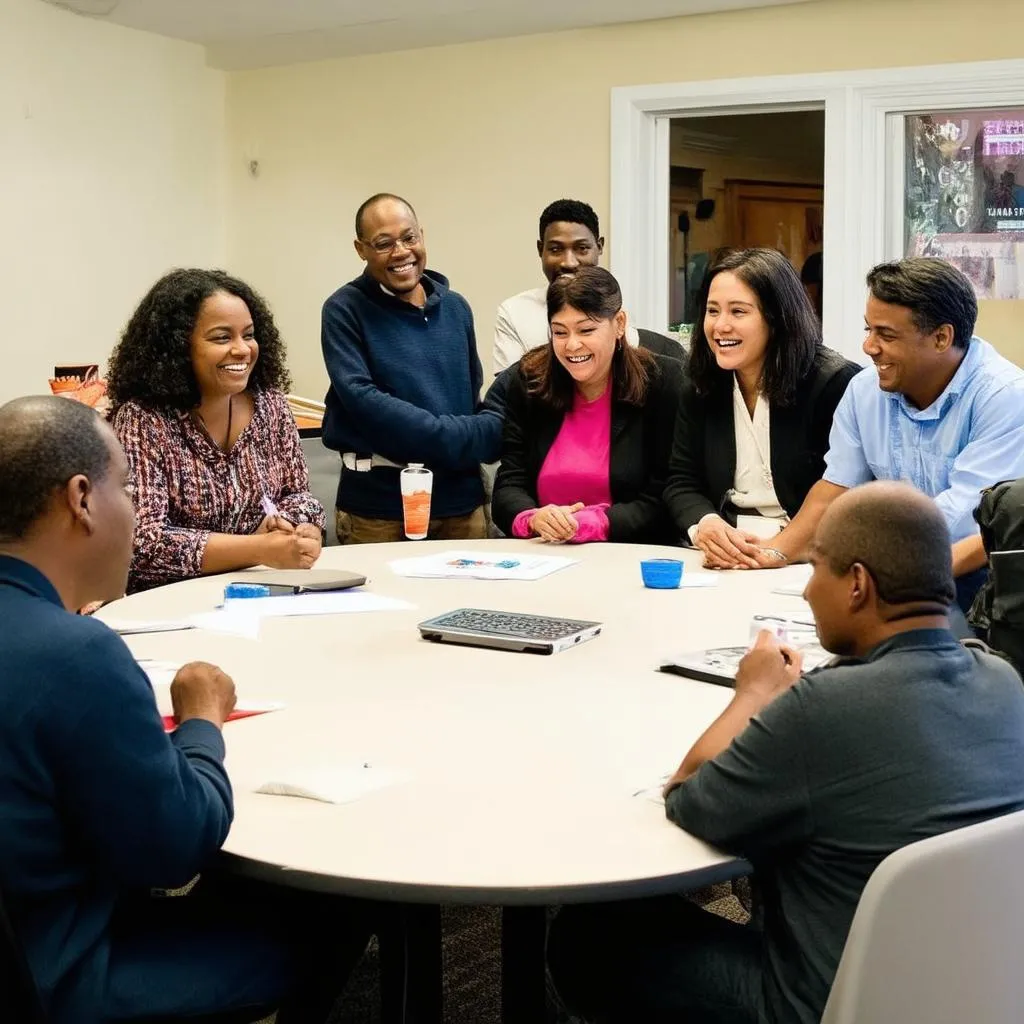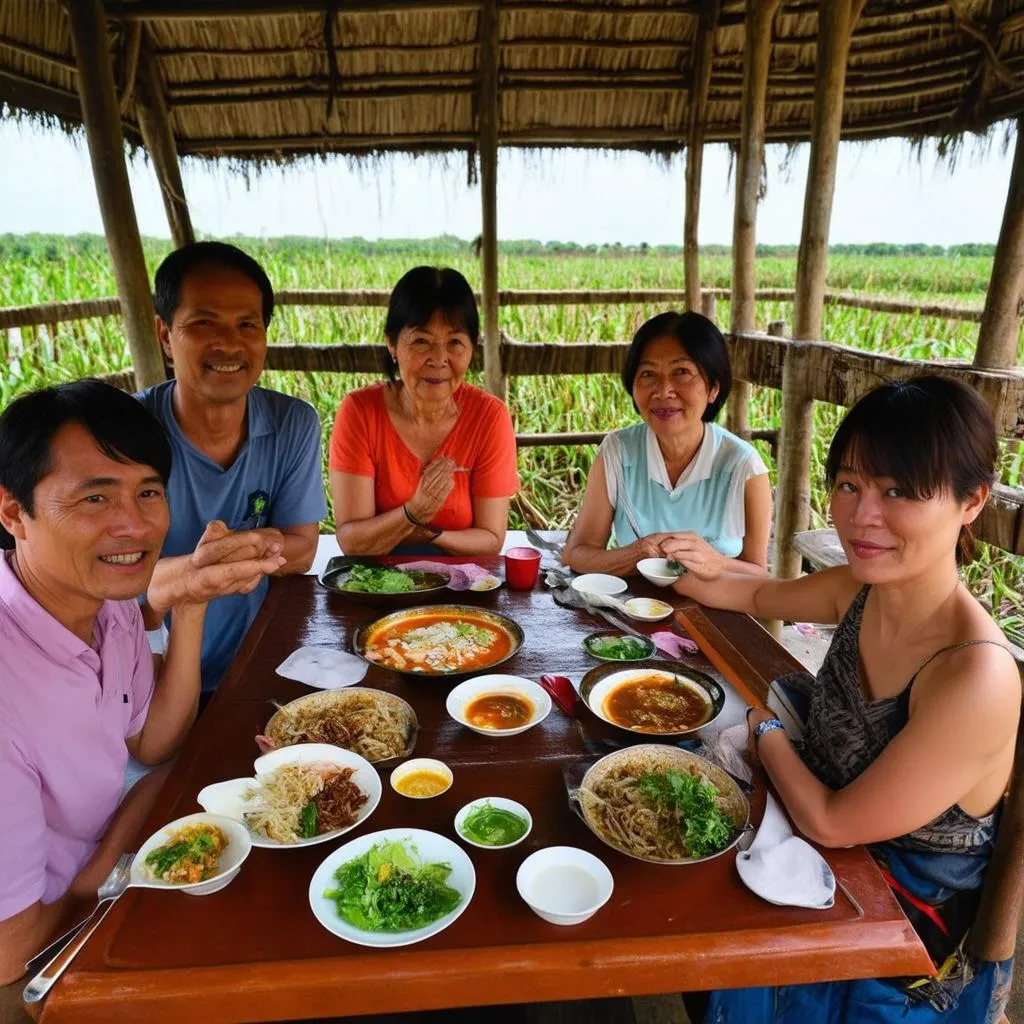Have you ever dreamt of experiencing a place beyond the typical tourist traps, of truly connecting with the soul of a destination and its people? This, my friend, is the essence of Community-Based Tourism (CBT), a movement transforming the way we travel and experience the world.
Imagine yourself not just as a visitor, but as an active participant in the vibrant tapestry of local life. Picture yourself sipping tea with artisans in a small Vietnamese village, learning the secrets of their craft passed down through generations. Imagine trekking through lush rice paddies with a local guide in Sapa, their stories painting vivid pictures of the land and its history. This, in essence, is the magic of community tourism.
What is Community Tourism Theory?
Community tourism theory delves into the principles and practices that empower local communities to manage and benefit from tourism. It’s about fostering sustainable and responsible travel that respects the environment, preserves cultural heritage, and directly benefits the economic and social well-being of host communities.
Key Principles of Community Tourism:
- Local Ownership and Control: Communities have the power to decide how tourism operates in their area, ensuring their voices are heard and their needs are met.
- Authentic Cultural Exchange: Travelers have the opportunity to engage in genuine interactions with locals, learning about their traditions, customs, and perspectives.
- Economic Empowerment: Tourism revenue directly benefits the local economy, supporting small businesses, artisans, and community projects.
- Environmental Sustainability: Community tourism promotes eco-friendly practices that protect and conserve natural resources for future generations.
 community tourism meeting
community tourism meeting
Why is Community Tourism Important?
Community tourism isn’t just a trend; it’s a transformative force. Here’s why:
- Empowering Local Communities: CBT empowers communities to take control of their own destinies, fostering self-reliance and pride.
- Preserving Cultural Heritage: It plays a vital role in preserving traditions, languages, and cultural practices that might otherwise fade away.
- Protecting the Environment: By promoting sustainable practices, CBT helps conserve delicate ecosystems and reduces the negative impact of tourism on the environment.
- Creating Authentic Experiences: It provides travelers with richer, more meaningful travel experiences that go beyond the superficial.
Experiencing Community Tourism in Vietnam
Vietnam, with its diverse landscapes and rich cultural heritage, offers a plethora of community tourism initiatives. Here are a few examples:
- Homestays in the Mekong Delta: Immerse yourself in the daily rhythms of life in the Mekong Delta by staying with a local family. Learn to cook traditional dishes, explore the canals by boat, and witness the vibrant floating markets.
- Trekking with the Hmong in Sapa: Embark on a trek through the breathtaking rice terraces of Sapa with a local Hmong guide. Discover their unique culture, traditional medicine, and stunning handicrafts.
- Cycling through Hoi An’s Countryside: Cycle through the picturesque countryside surrounding Hoi An, stopping at local villages, temples, and craft workshops. Interact with friendly locals and gain a deeper understanding of rural Vietnamese life.
 Mekong Delta homestay
Mekong Delta homestay
Planning Your Community Tourism Adventure:
Here are a few tips for planning a meaningful community tourism experience:
- Do your research: Seek out tour operators and organizations that prioritize community involvement and responsible tourism practices. Travelcar.edu.vn is a great resource for finding ethical travel options in Vietnam.
- Travel with an open mind: Be respectful of local customs and traditions, and be prepared to step outside your comfort zone.
- Support local businesses: Purchase handicrafts directly from artisans, dine at locally owned restaurants, and stay in community-run accommodations.
- Learn a few basic phrases: Even a few words in the local language can go a long way in breaking down barriers and fostering connections.
FAQs About Community Tourism:
Q: How can I find authentic community-based tourism experiences?
A: Look for tour operators and organizations that are transparent about their community partnerships and have a strong commitment to ethical and sustainable tourism practices. Websites like Travelcar.edu.vn and responsible travel blogs are excellent resources for finding genuine CBT experiences.
Q: Is community tourism more expensive than conventional tourism?
A: Not necessarily. While some CBT experiences may have a higher upfront cost, you’ll often find that they offer better value for your money. For example, staying in a homestay might cost less than a hotel and often includes home-cooked meals and authentic cultural experiences.
Q: How can I ensure my trip benefits the local community?
A: Support local businesses by purchasing souvenirs from artisans, dining at family-run restaurants, and staying in community-owned accommodations. Choose tour operators that have a proven track record of fair wages and reinvesting profits back into the community.
 trekking in Sapa
trekking in Sapa
Conclusion: Embark on a Journey of Connection
Community tourism is more than just a way to travel; it’s a way to connect with the heart and soul of a destination. It’s about forging meaningful relationships, supporting local economies, and preserving cultural heritage for generations to come. So, on your next adventure, consider venturing off the beaten path and experience the magic of community tourism. You might be surprised at the transformative power of genuine human connection and the unforgettable memories you’ll create along the way.